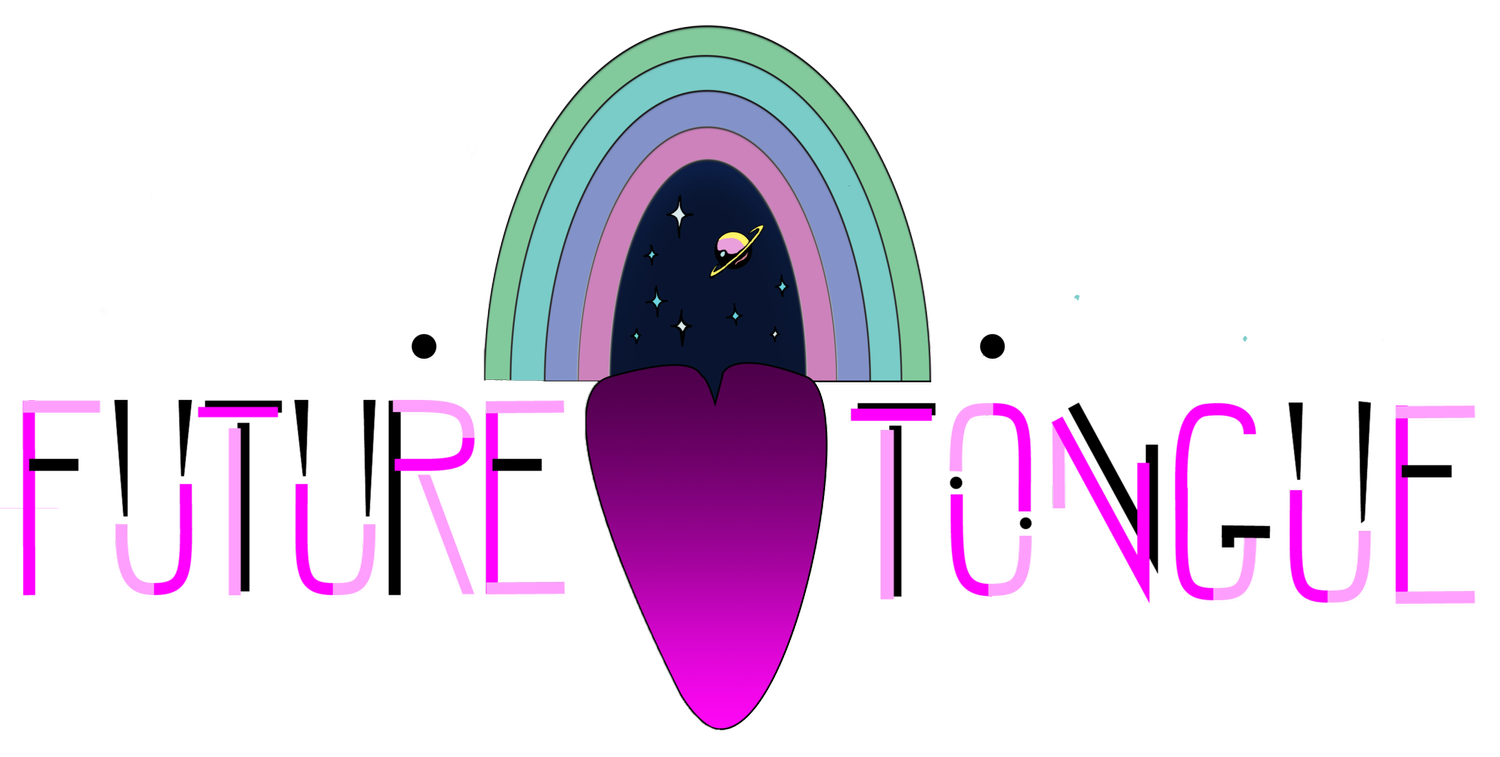SHEPARD FAIREY
ECHO PARK, LOS ANGELES
Shepard Fairey and his team have been steadily growing a little empire in Echo Park. The labyrinth which contains his art gallery, design studio, and headquarters for his multitude of other business is a nondescript building nestled between two taco shops, which, I guess, could be anywhere on the eastside. Shepard's office is literally filled to the brim with amazing artwork they have been collecting, trading and adding to over the years. I should know, as when I worked at Shepherd's gallery, finding homes for these beautiful pieces was part of my job. When you walk through the door you'll notice one thing first: the loud crashing sounds of punk rock, metal and hiphop which stream from Shepard's office 10 to 6 every day. Shepard's second art studio, otherwise known as "The Deuce" sits a mere stones throw away. The Deuce is a decently sized commercial garage which houses an extensive collection of spray paints, stencils, a sexy laser cutter, and my personal favorite: books of ancient newspaper articles used to make collages. His studio assistants tell me about the grungy days of ol' when they worked out of Shepard's garage at home. They used to slowly reheat each spray paint can when it got too cold outside, otherwise they would "come out all crusty." Today, Shepard is busting out prints like a well-oiled machine. Between mural tours, designing posters, making t-shirts, curating shows, and getting arrested, Shepard stays pretty busy. Needless to say, I am very glad we were able to snag an hour with him to get some insight on his upbringing, process and practice in the studio.
Interview by Britt Harrison Photography and Videography by B. Justine Jaime
Posted on March 14, 2016
CHECK THIS VIDEO!
THE BEGINNING
I started drawing when I was a little kid, probably 3 or 4 years old. My passion for it grew over time. I don’t think I took it that seriously yet, but I won the First Grade Art Contest with a drawing of an aircraft carrier.
CHARLESTON: Creative Outlets
Charleston wasn’t very progressive, but fortunately I discovered skateboarding and punk rock, which were gateways to a different world. I always liked making things. Other than drawing and painting, I built forts, model airplanes and tanks. I searched for interconnecting walls so that I could go all the way through neighborhoods without having to step on the normal ground. I also had a lot of creative mischief with water balloons, rubber band chains, booby traps, etc.
INITIAL INSPIRATION
Album covers, skateboard graphics, and t-shirt graphics. I did traditional drawing in high school, but I also fell in love with making stencils that were my interpretations of punk and skateboard iconography.
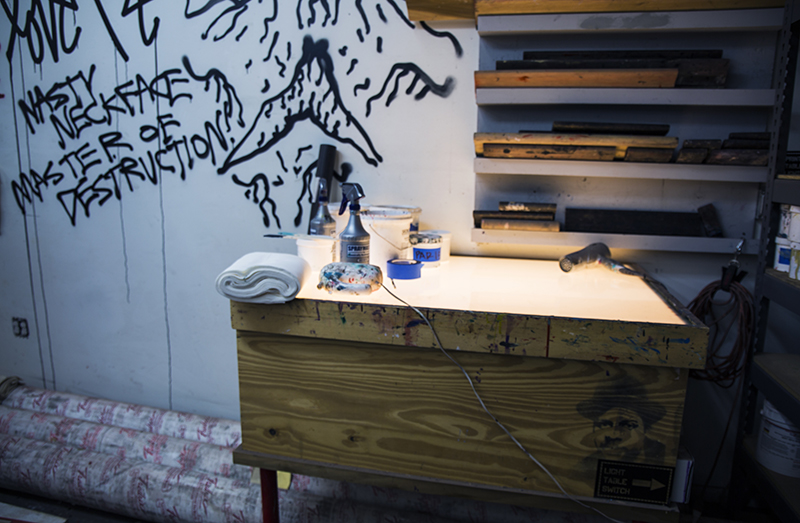
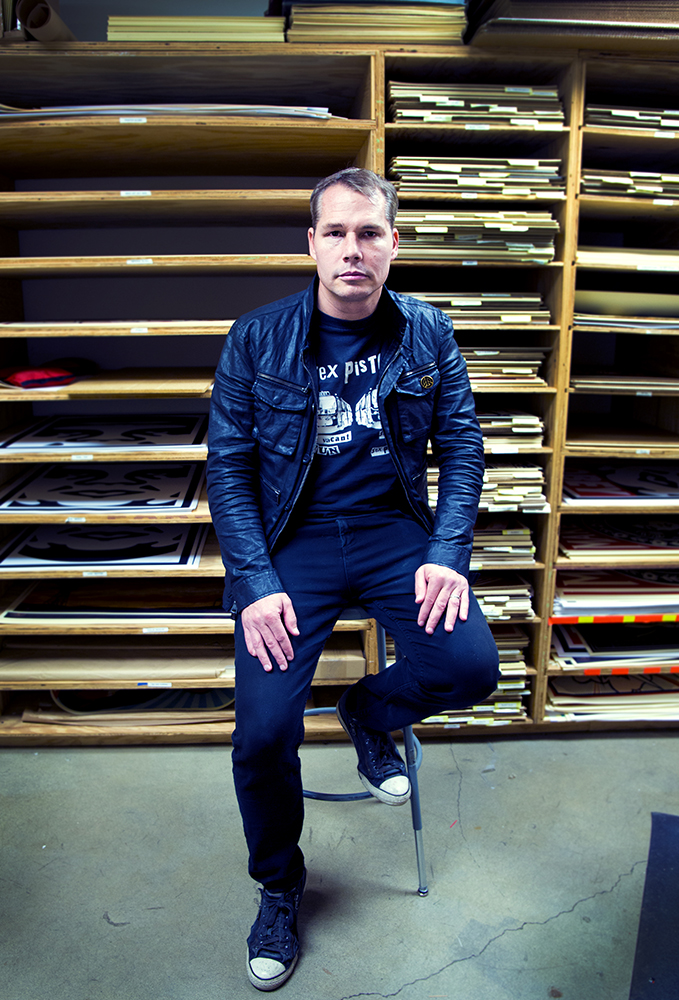
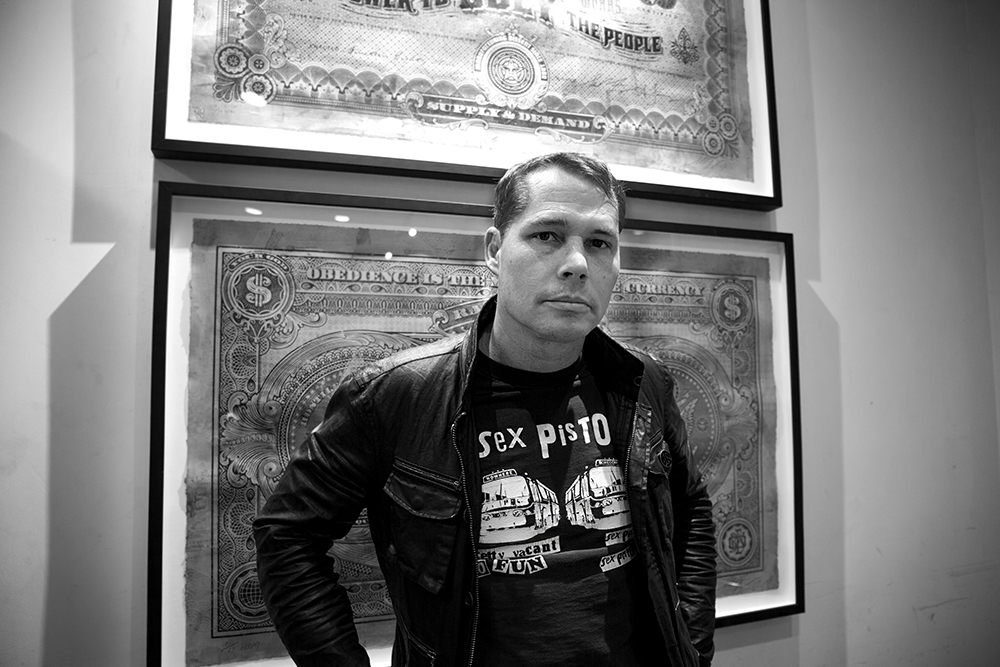
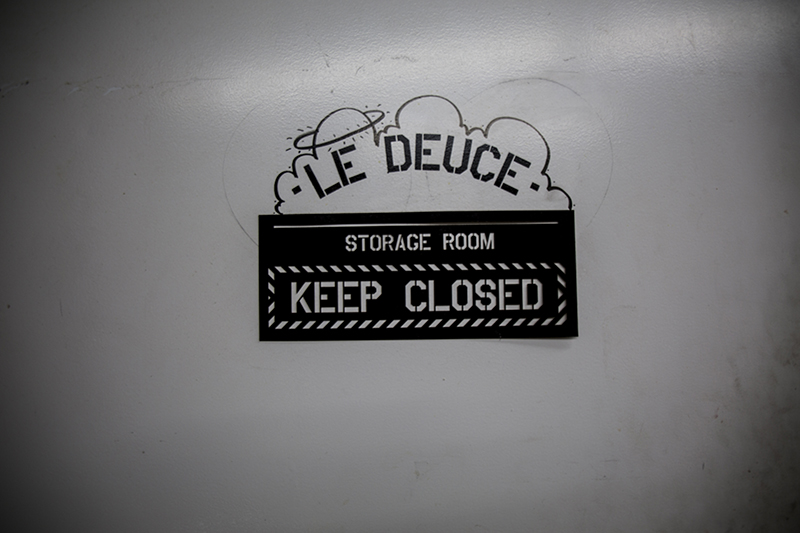

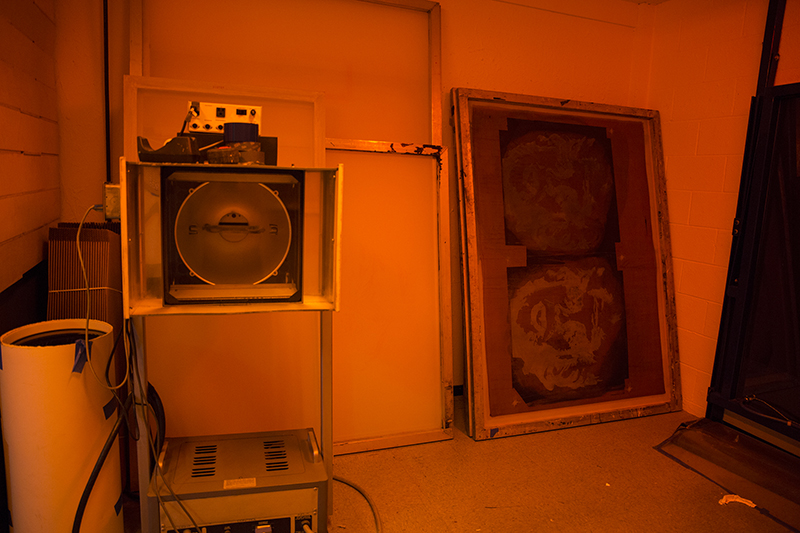
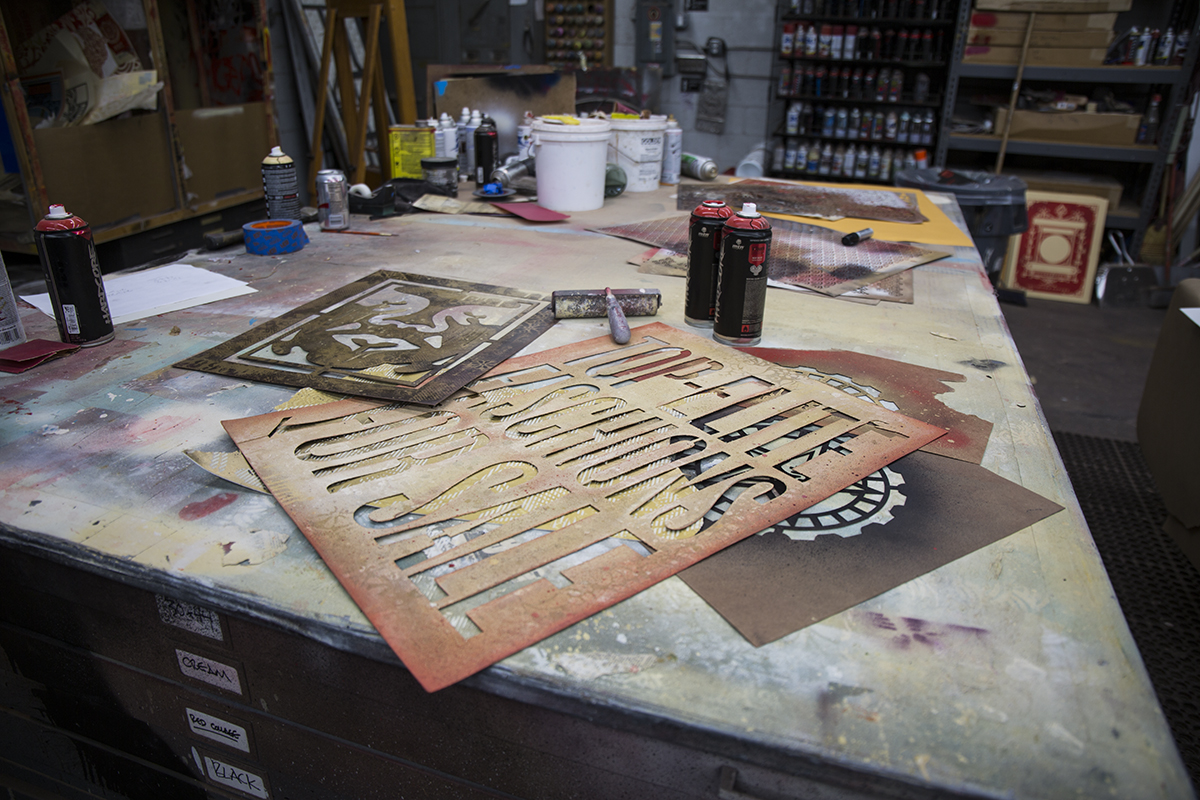
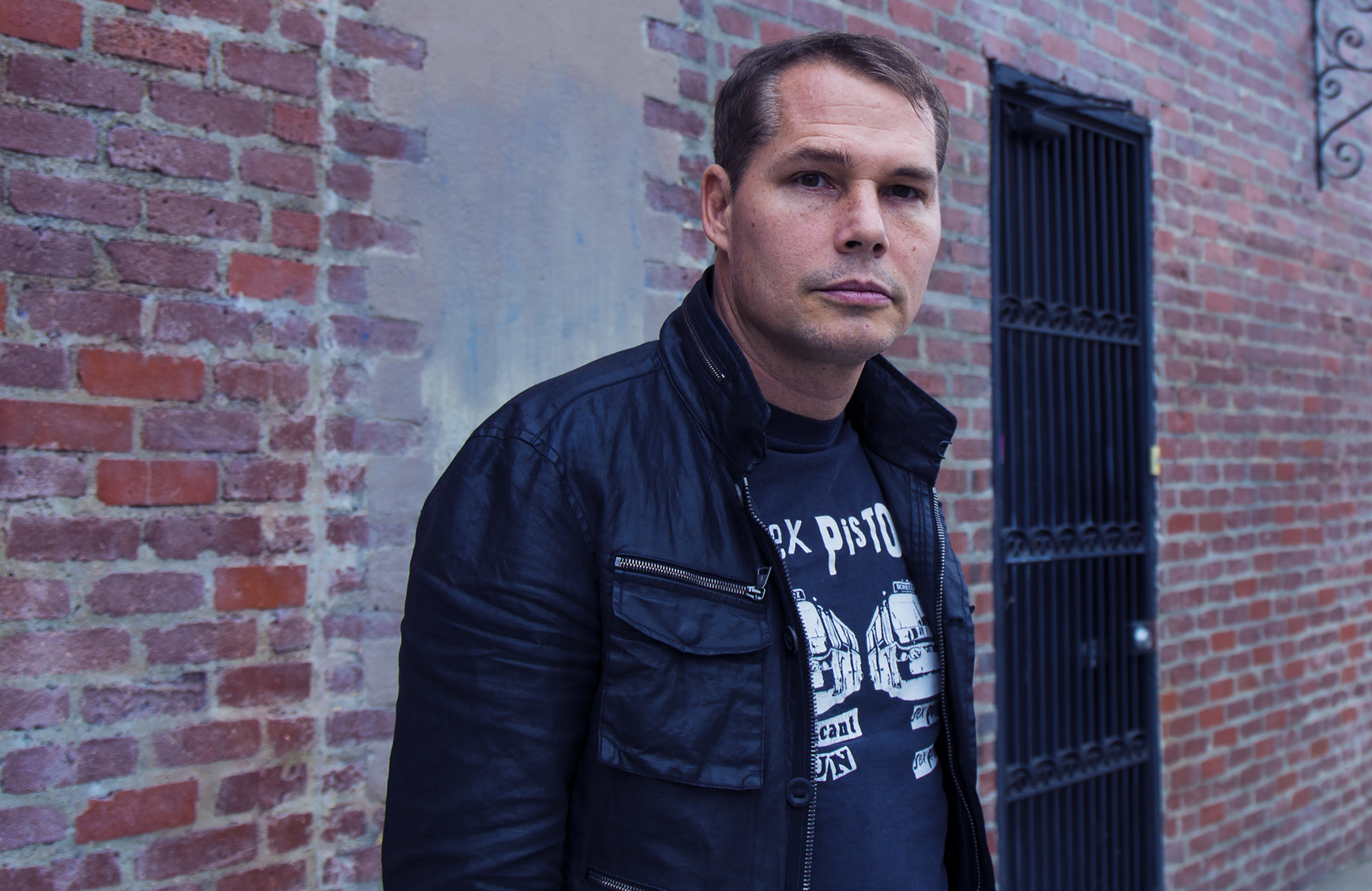
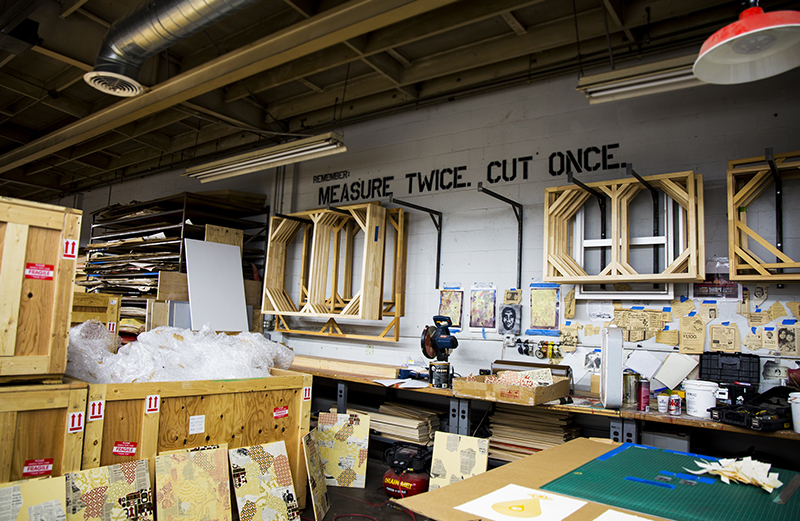
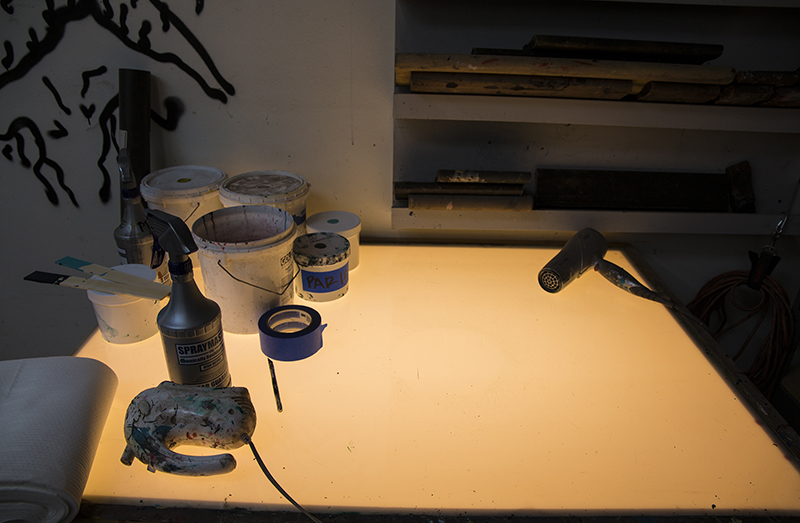
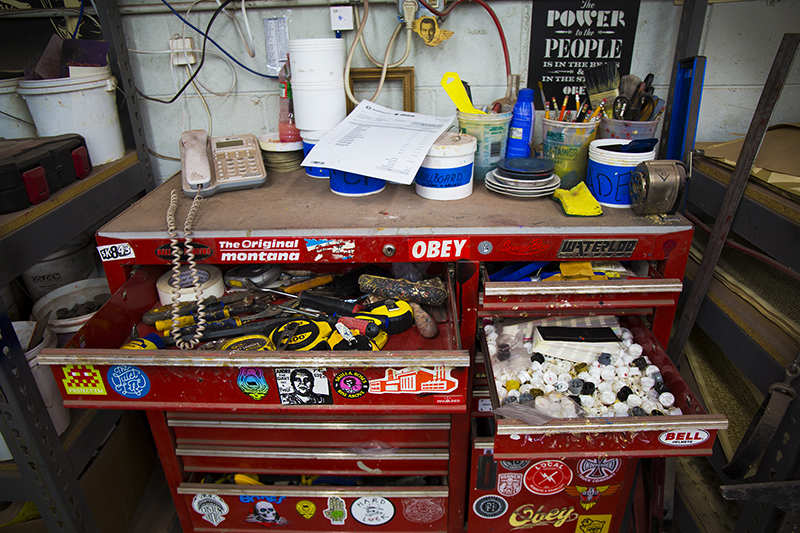
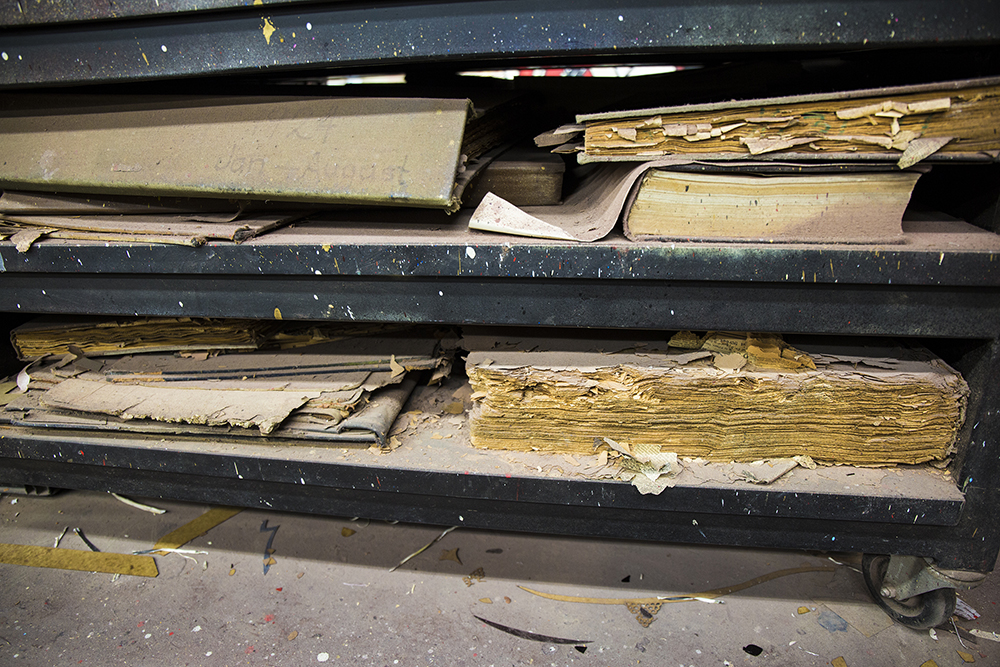
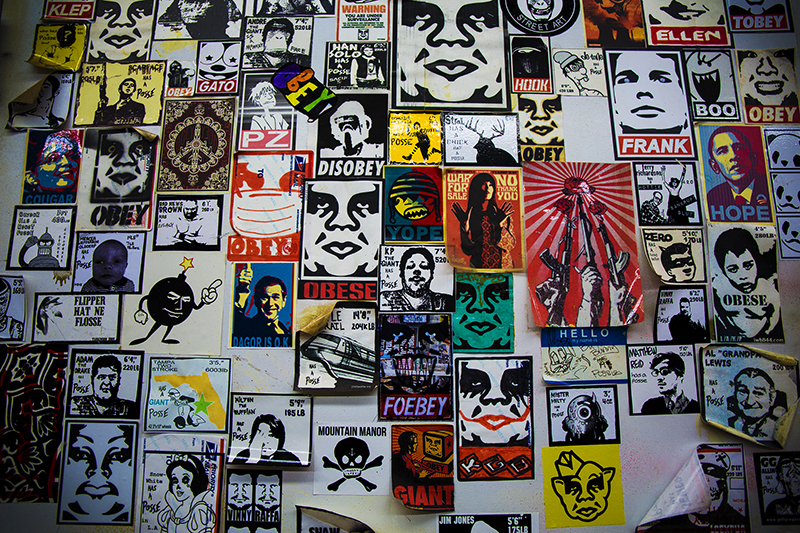
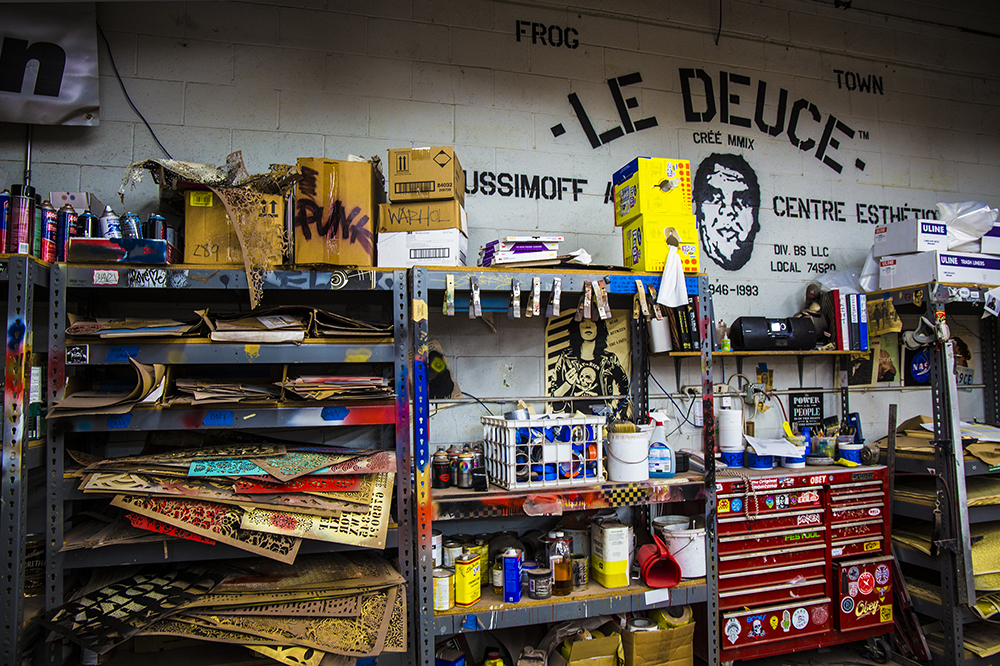
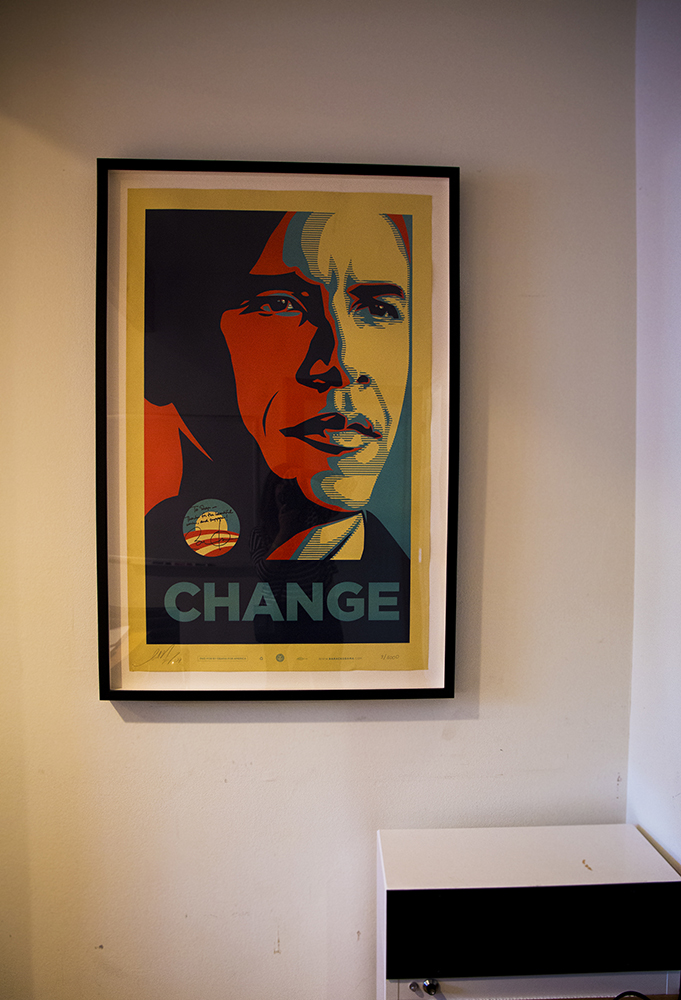


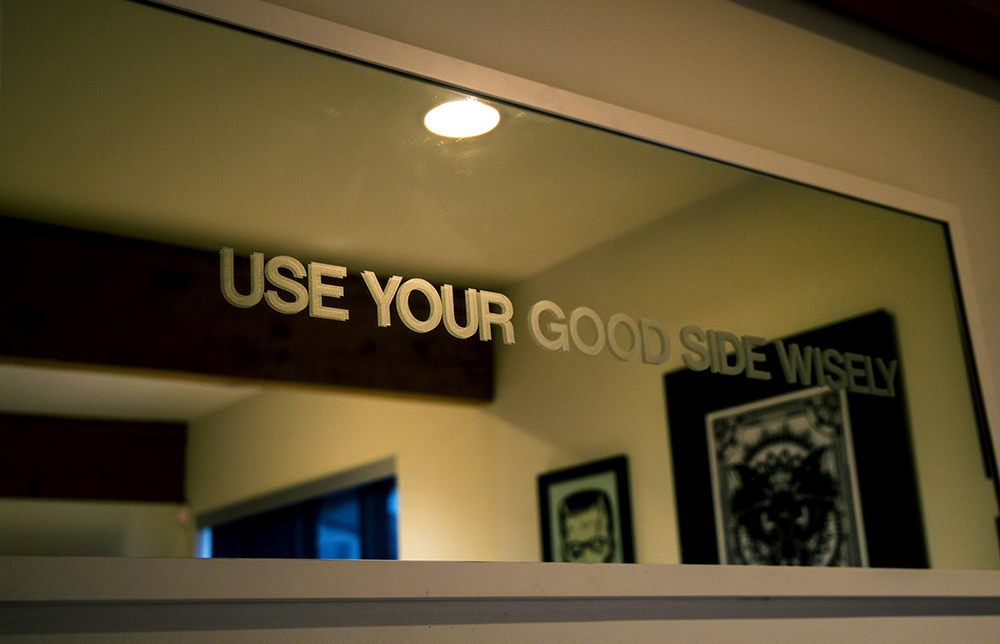
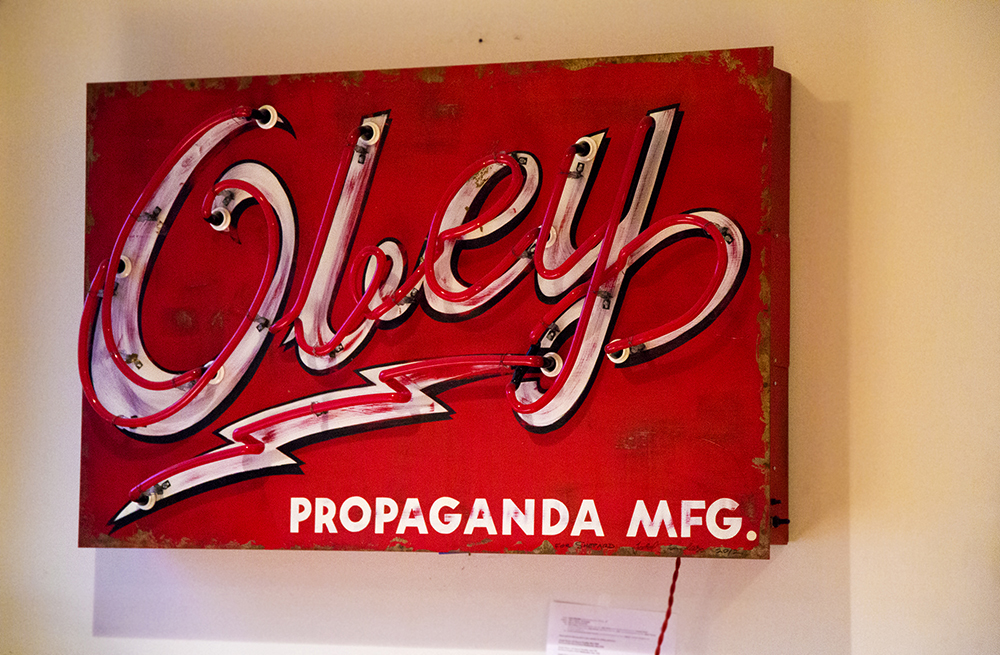

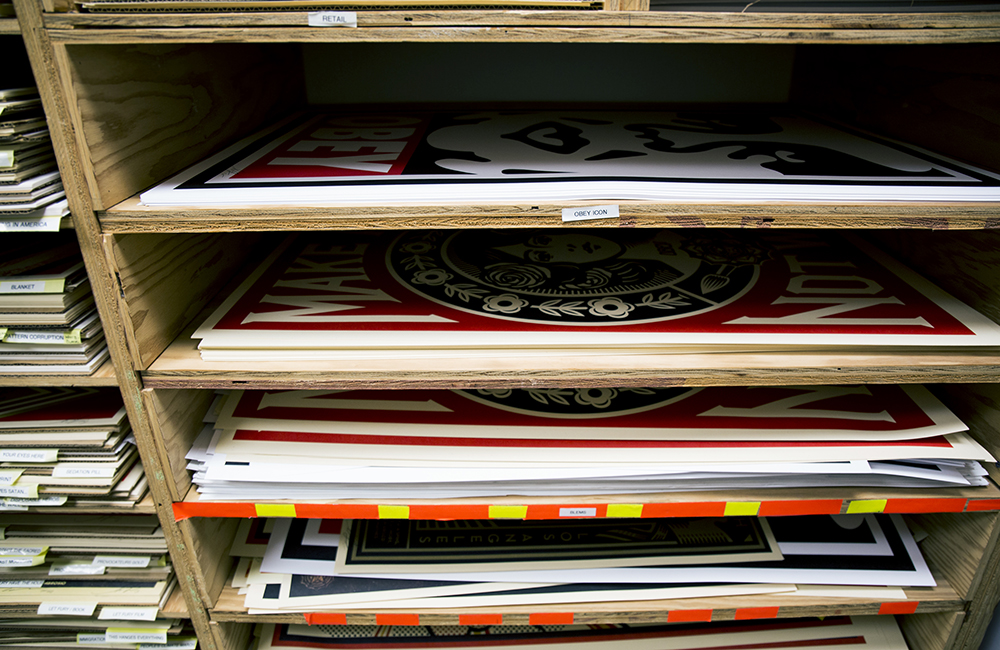
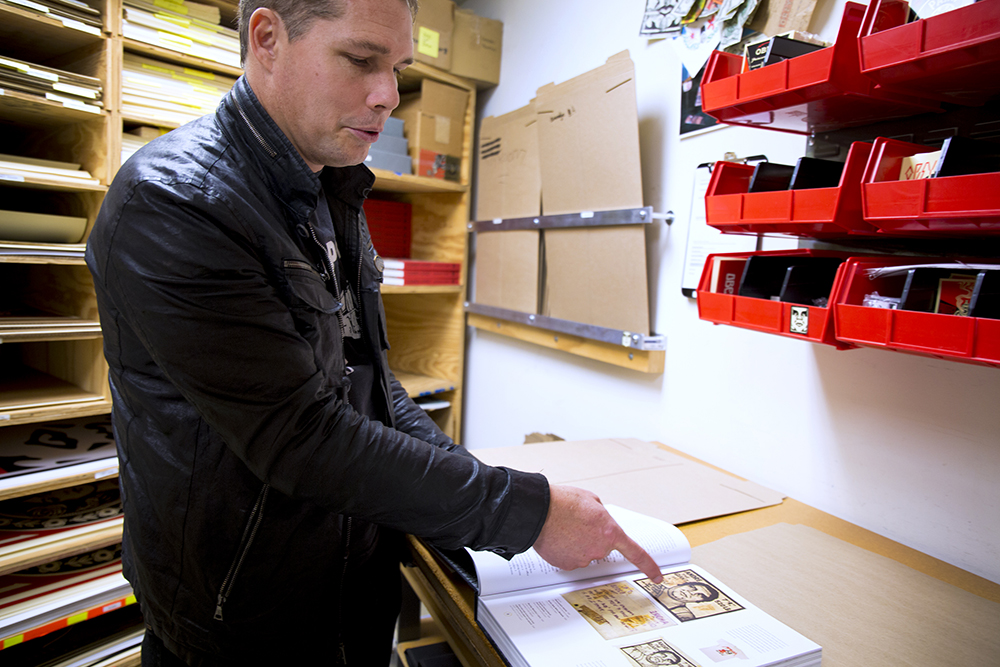
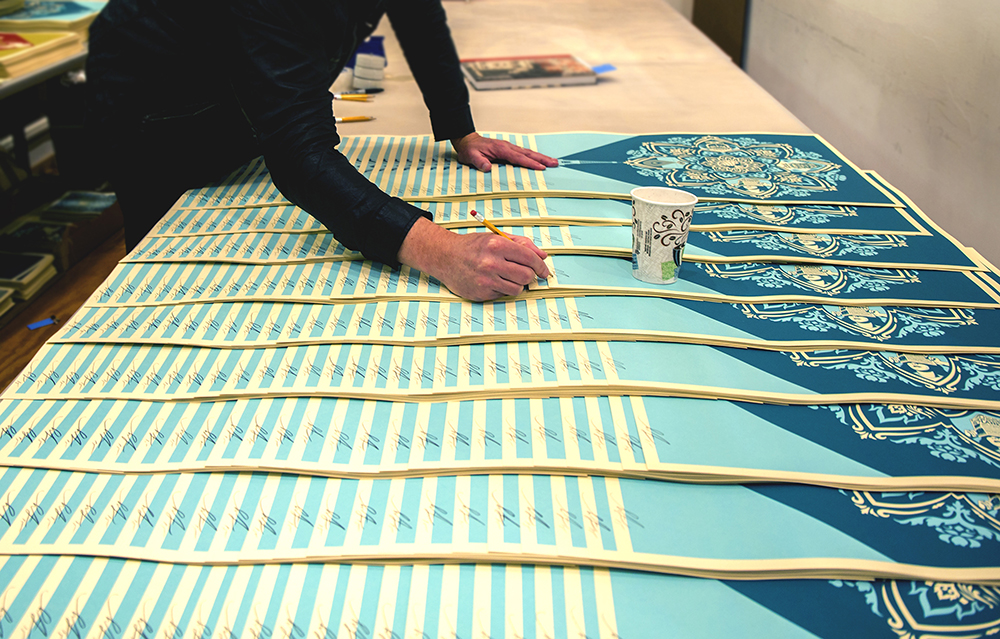
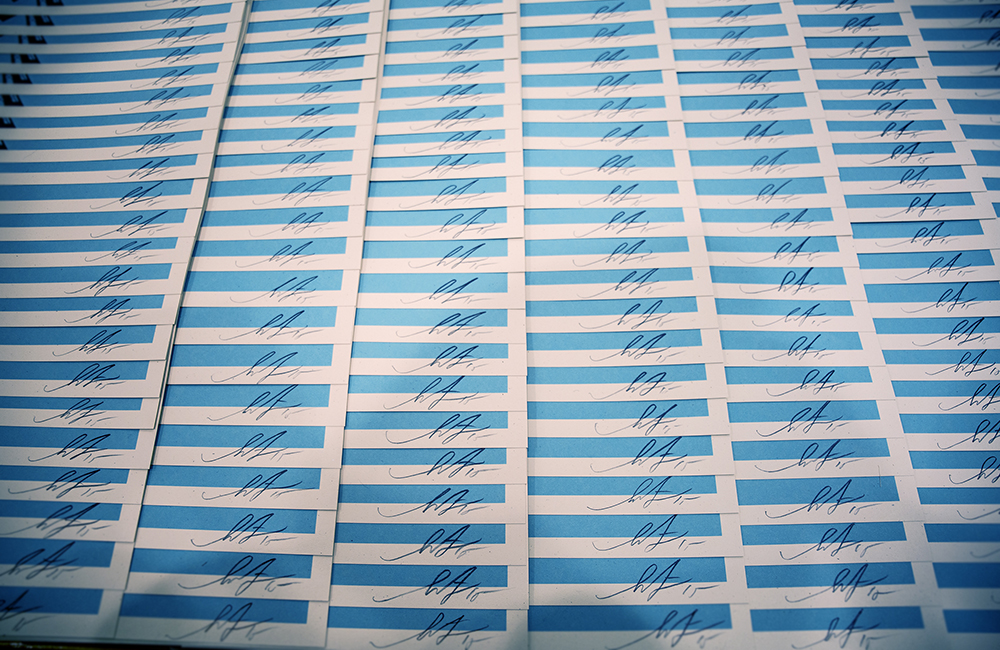
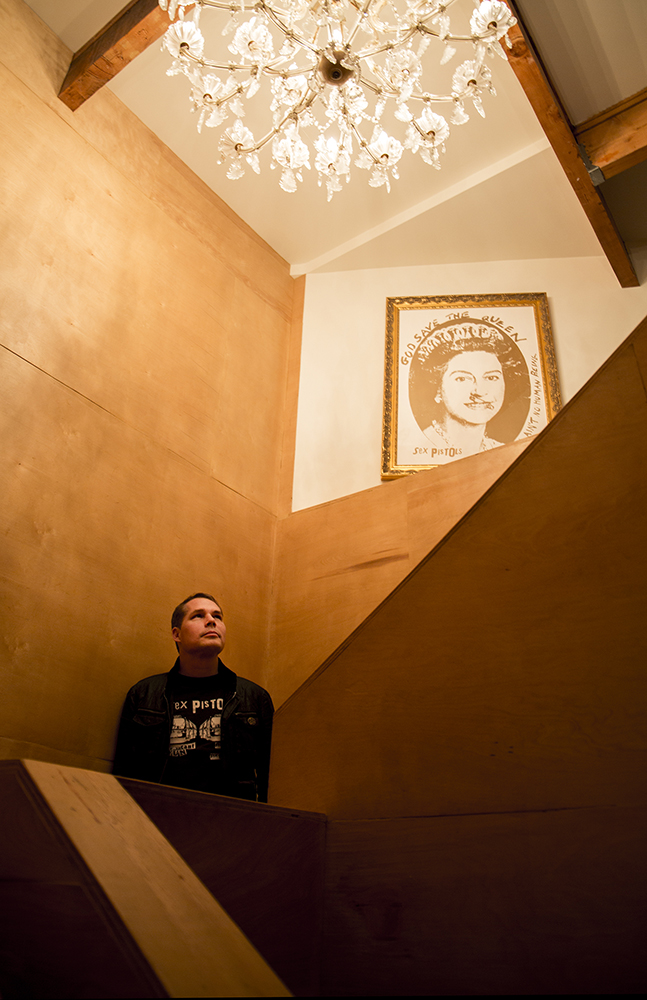
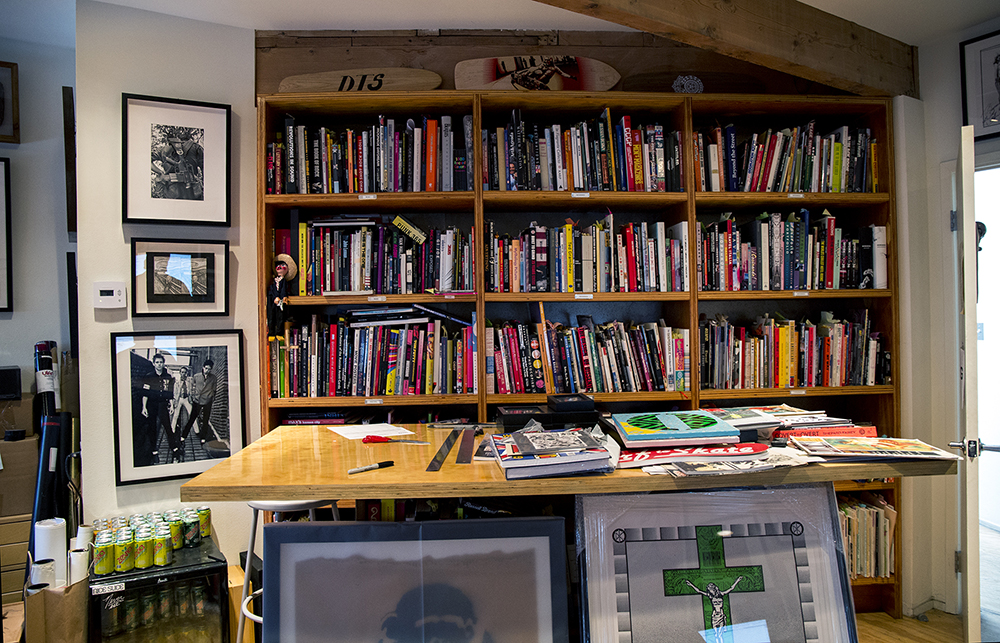

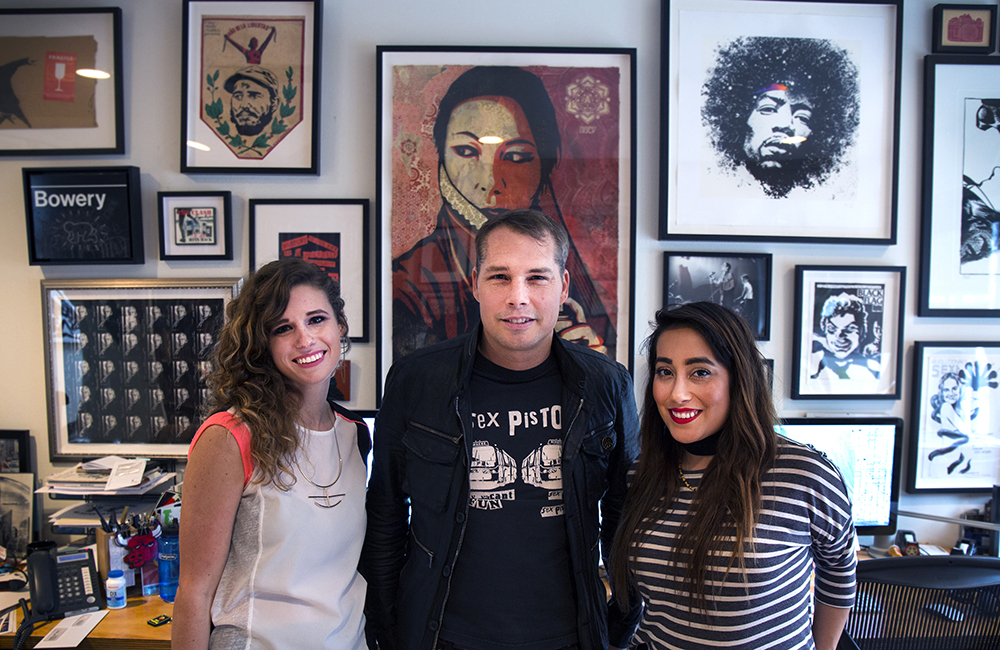
BATTLING DISCOURAGMENT
Prior to skateboarding, I didn’t share how passionate I was about art with my friends, because art wasn’t particularly cool to them. The great thing about skateboard culture was that it was cool to make your own stuff. I guess that makes sense in a do-it-yourself culture. Skateboard and punk shirts were not that easy to come by in Charleston, so my homemade shirts had extreme value to my peer group. My parents encouraged my traditional art, but hated anything having to do with punk rock or skate boarding. Later when I started my Andre the Giant sticker campaign, they thought it was stupid and a waste of money. The only way I was able to go to art school was by threatening them that I would fail out of regular liberal arts college, which would be more embarrassing to them than me succeeding at art school.
CONCEPTUALIZING YOUR DESIGNS
Some ideas take longer to develop than others. Sometimes, while doing research, an image gives me an idea. Other times things I’m reading or listening to give me ideas, and then I have to do research on it, and work out illustrations. I’m relentless with my trial and error so if my first idea doesn’t work, I keep trying different options until I find a solution. That process can be very fast or very long.
PROCESS: HAND PAINTED MULTIPLES
I studied illustration and photography in art school, but I never wanted to be an illustrator. I liked things that were graphic, which led me to fall in love with screen printing. I was also a huge fan of artists like Rauschenberg and Jasper Johns, who use a lot of texture in their work. The paintings I do now frequently incorporate more than one, if not all of those techniques and aesthetics. I usually begin with an illustration then scan it into the computer to work out color, composition, typography, and other ornamental elements. Once I’m happy with my digital sketch, I make stencils and screens, which I apply over backgrounds I collage.
I also do some traditional painting and use pieces of cut paper built up in relief on the surface of the canvases. The nice thing about these techniques is that there’s a lot of latitude for experimentation. Any stenciling, printing, painting, or collage that I don’t like, I can cover with more of the same techniques. I like the tension between the graphic and the organic that happens in the paintings, which is very different from my screen prints.
BACKGROUND COLLAGE
I collect a lot of material - old magazines, newspapers, and especially bound newspaper volumes that contain an entire year’s worth of ads and stories. The older newspapers frequently contain great illustrations and typography that can relate to, or amplify the ideas in the art pieces, but they don’t always have to. One of the ideas I like to put across is that our output is directly related to the high volume of intake of experiences and media.
FAVORITE PART?
Probably getting to the physical work rather than the trial and error that goes on digitally. Working with my hands - paint, brushes, tape, and glue – is a lot more exciting, but it’s the culmination of all the steps, not just those steps, that matter. When I’ve finished a piece, I enjoy it briefly, but then it’s time to begin the process all over. I often have a lot of things going at once, so there isn’t much time for me to ponder the thing I just finished.
DEFINING YOUR STYLE
I look at my style as not one style, but many styles filtered through my set of principles. The more I work and experiment, the more I understand what is successful and what isn’t. I find inspiration in a lot of styles, but filtered through my sensibility, the result looks like me I think.
BALANCING FAMILY, BUSINESS AND STILL PRODUCING WORK
I don’t know if it is balanced, if you ask my wife she would probably argue I’m too obsessed with my work, but I do love spending time with my kids. They are 7 and 10 and have their own creative interests that are a pleasure to observe and incubate. I’m mostly able to pull everything off, because I work a lot of hours.
I start my second shift after my kids go to bed and usually work until around 1am. I usually work on weekends as well. I’m not complaining because I enjoy what I do, and the idea of having more free time at the cost of giving up some projects does not appeal to me. I’m diabetic, and my Dad told me when I was diagnosed at 16 that I would probably live 20 years less than most people. I just think subconsciously the idea of making the best use of my limited time has always been a factor.
THE ROAD TO SUCCESS
The good thing about getting used to poverty, which I did for many years, is that a minor degree of success that pulls you out of that, seems like a miracle. I’ve always done what was important to me philosophically as an artist, and the commercial success has been a fortunate, but not calculated byproduct.
DREAM ON
My original vision or fantasy was that I’d have an art and printing studio in Providence, Rhode Island, with a skate board ramp in it that would work like Warhol’s Factory. Me making cool stuff for myself and bands like the Velvet Underground or the Melvins might drop by for a drink and a chat. It didn’t work out that way, even though I was able to print some t-shirts and stickers for cool bands like Six Finger Satellite and Sonic Youth. I ended up very far in debt because I was financing my street art and my t-shirt line with credit cards and I was making almost no money.
In 1996, I realized I’d probably have to shut my studio down. It was one of the most depressing times in my life, but I’m very stubborn and decided there must be an alternative route to making things happen I believed in. I was friends with a former pro-skateboarder named Andy Howell, who offered me a unique situation. Andy had a clothing line called Zero Sophisto and offered me a job as his production manager, but also would finance me doing my own clothing under the umbrella of his company, from which I would earn a royalty. This scenario allowed me to keep the dream alive and also relocated me to San Diego, where it was easier for me to make headway with my own art.
ADVICE
What I realized was that when I was about to give up was right before my work achieved a critical mass based on the groundwork I had laid. My advice to any up-and-coming artist is to not give up too quickly because you never know when things will click. That being said, it’s important to make sure that you are your own harshest critic and that what you are doing is unique enough to stand out.
LA ART CULTURE
Asking how I feel about the art world, is kind of like asking how I feel about the Internet - it’s vast. LA is a very diverse place and has a lot of subcultures and scenes. I like that the LA art world is not as hierarchical as other places I’ve been. The great thing about LA is that it’s still fairly affordable so artists with unique styles but no commercial success can still afford to experiment and live in LA. I think that the vast number of cultural influences and affordability make LA very rich for art.
BREAKING INTO THE GALLERY SCENE
I’ve been lucky not to go through the process of submitting work to galleries to face acceptance or rejection. Because I put work up in the streets and have had a strong following online for many years, galleries frequently come to me. I understand that that won’t work for everyone. I do think it is important to go to shows at different galleries to meet the gallerists and see what kind of program the galleries offer. At our gallery, Subliminal Projects, we frequently put pieces by emerging artists in group shows because it is lower risk if that artist’s market is unproven. When approaching galleries, it is important to be humble and get a foot in the door even if that means only putting a piece or two in a group show.
Shepard Fairey in front of work by Ben Venom
SUBLIMINAL PROJECTS
There isn’t one style that dominates Subliminal Projects. I like a lot of different genres of art but the thing that I’m looking for is that the artist, whether they have a following or not, has unique qualities to their work both aesthetically and conceptually.
JAMMIN
If I’m working on the street, I like things that are adrenalin-inducing like Ice Cube, Black Flag, Bad Brains, The Sex Pistols, Black Sabbath, Public Enemy or The Ramones. When I’m working in the studio there’s always a range from aggressive stuff to mellower stuff like Portishead, Bob Marley, Johnny Cash, the Velvet Underground, the Modern Lovers, and Interpol.
FAVORITE LYRIC
From Public Enemy’s “Don’t Believe the Hype” - “Reach the bourgeois and rock the boulevard” - because to me that’s a succinct and cool way of saying it’s important to reach high and low culture, to be street and elite, and that’s my philosophy.
